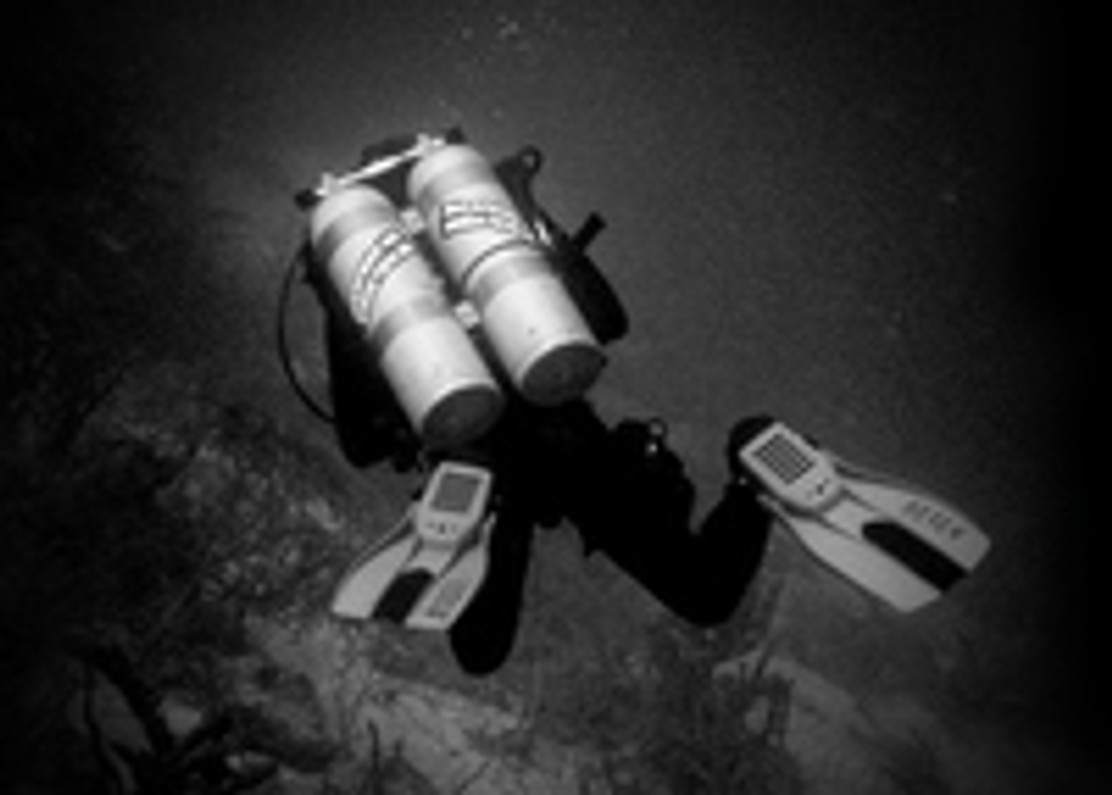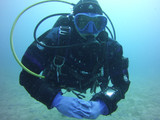Technical Diving
Want to explore deep wrecks? Explore underwater caves? Stay longer at depth? If you answer yes to any of these questions, then technical dive training is what you need.
Unlike recreational sport diving which keeps you within no-decompression limits and a depth limit of 130 feet, technical diving lets us go deeper and/or stay longer at depth with proper knowledge, training, and experience.
Is this type of diving safe? As with any type of diving, technical diving has risks. To reduce the risks we prepare our gear thoroughly, plan extensively, and practice our skills on a regular basis.
Dive gear for this type of diving is a bit different than recreational gear. Divers wear either stainless steel or aluminum back plates with a continuous webbing harness to reduce failure points like buckles. The webbing has stainless steel d-rings that can be positioned in the exact required area it is needed to secure our gear. Sandwiched between the back plate and tanks is a back buoyancy device, a.k.a. wing, which are designed to be used in conjunction with twin cylinders. The tanks are twinned together with a manifold system so divers can breathe from both tanks at the same time or isolate a problem with the system.
Redundancy is a key aspect to technical diving: divers carry a spare masks, two 1st stages, and two adjustable 2nd stages on our tanks, two bottom timers, and other essential gear for the dive. In addition to carrying the twin tanks on our backs, a diver may have one or more additional tanks with decompression gases such as 50% and/or 100% oxygen.
Technical Diving International (TDI) is one of the forefathers of technical diving. The courses provided by TDI have developed over the years from practical experience in technical diving. Each course builds upon the other, giving the diver knowledge and experience prior to continue on to the next level. Getting the proper training for technical diving is essential for safe diving.
The first level of technical diving is "Intro to Tech Diving". In this course, the student will learn how to assemble and prep their gear, emergency procedures, trim (horizontal) position in the water, situation awareness, fin kicks (modified frog, backwards, modified flutter, helicopter), surface marker buoy (SMB) deployment, and dive planning to name a few. After the student completes and builds experience from this course, he/she may continue onto Advanced Nitrox Course and Decompression Procedures Course.
While technical diving is not for everyone, divers that are looking to venture deeper, longer, or would like to penetrate a wreck or cave, may want to consider getting properly trained before attempting this type of diving.
Recent Posts
-
Scuba Refresher Courses: Why They’re Essential for Every Diver
If you take a look at your scuba certification card, you’ll notice there’s no expiration date. …2025 Apr 7th -
Local Scuba Diving Available During the Summer
Fresh water diving is available all summer and into the fall in various lakes around the province …2024 May 29th -
Top 5 reasons to start Snorkeling
There are so many reasons to go on a nice, warm, tropical vacation during the winter, especially her …2024 Mar 7th




